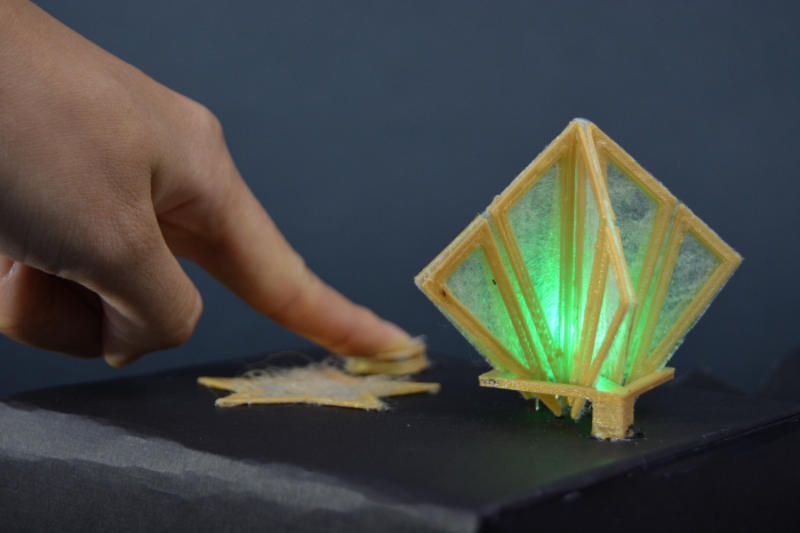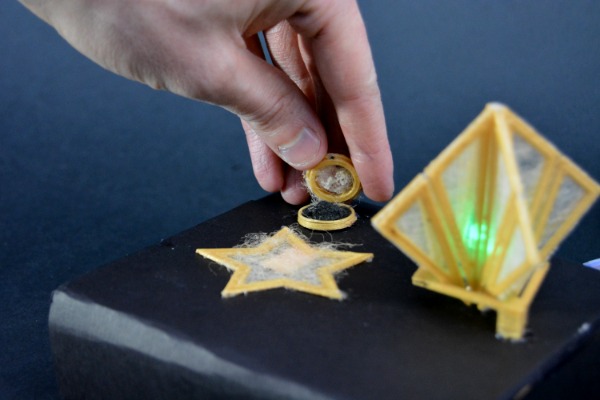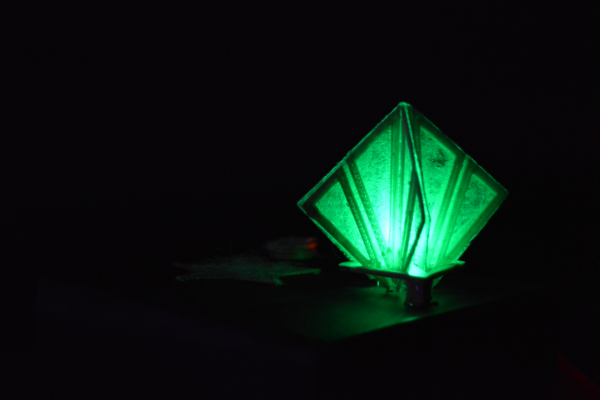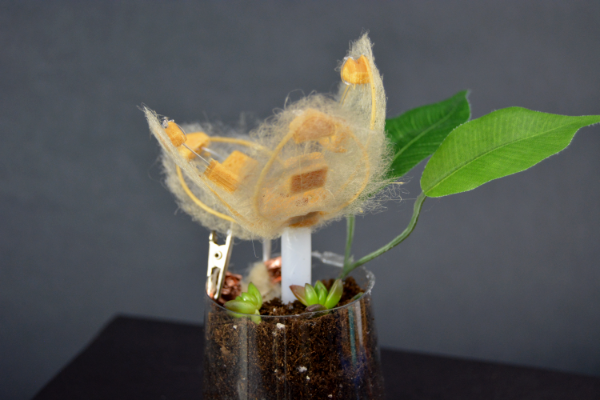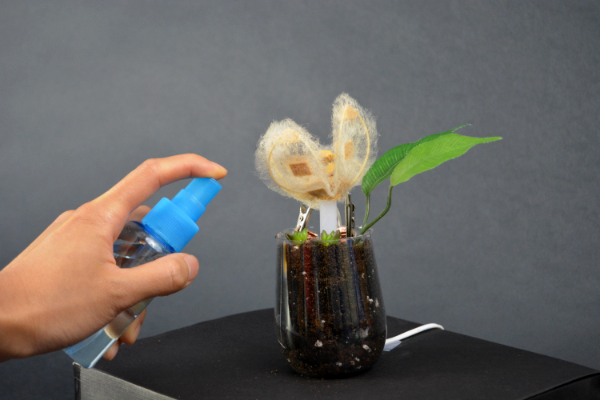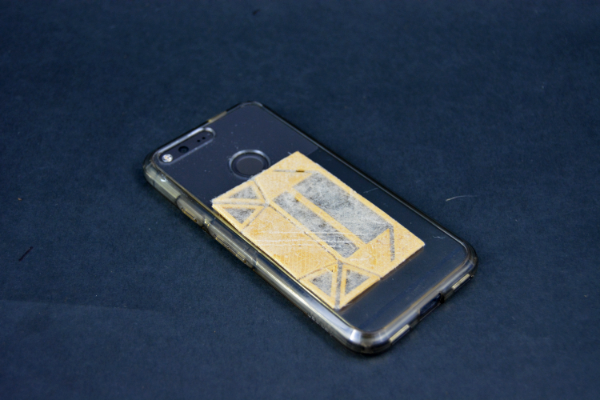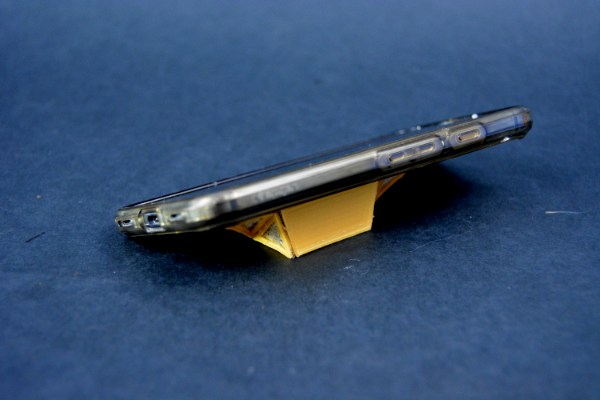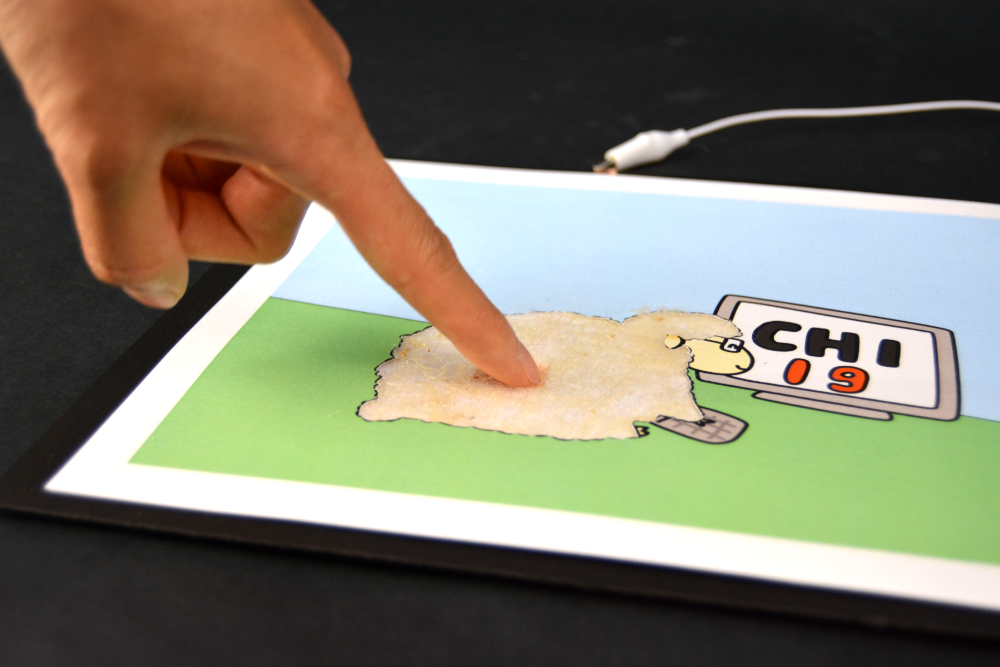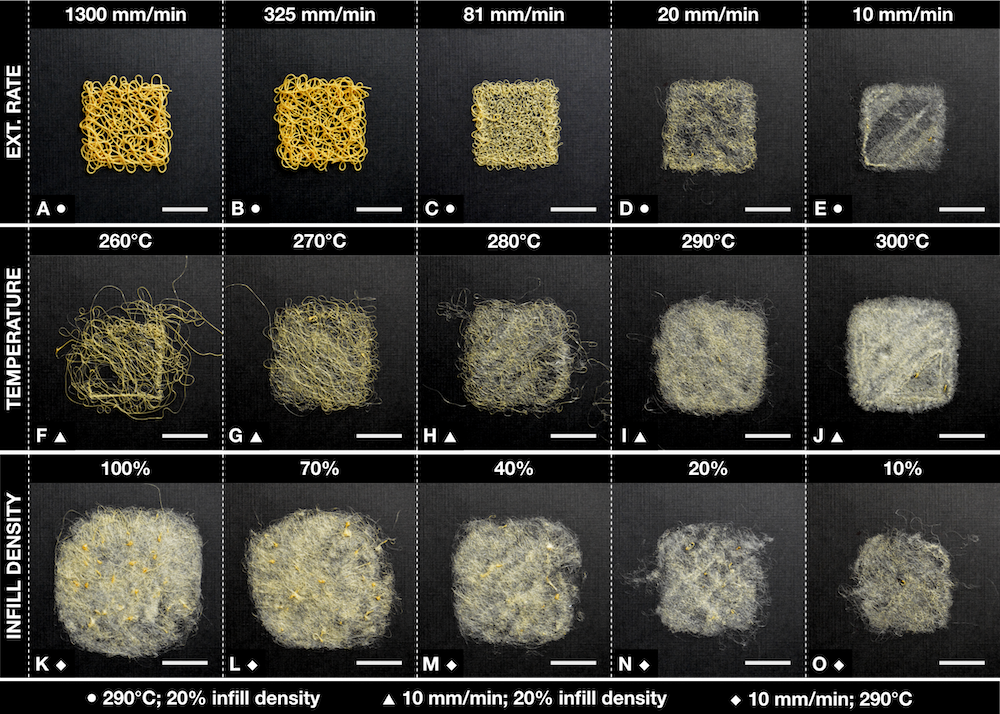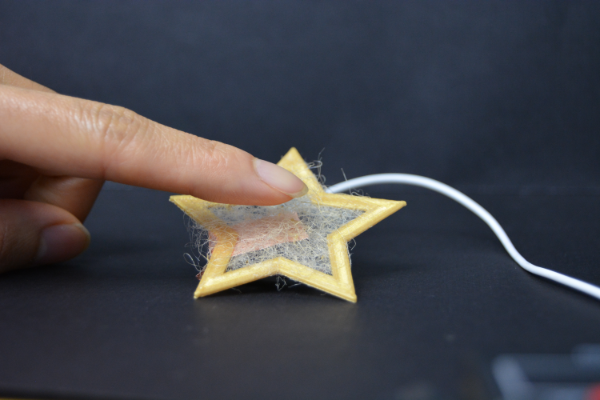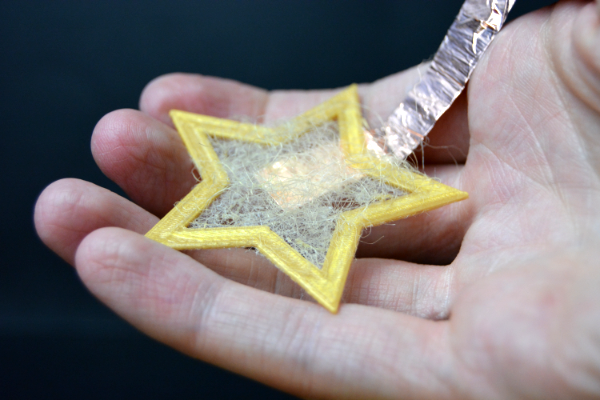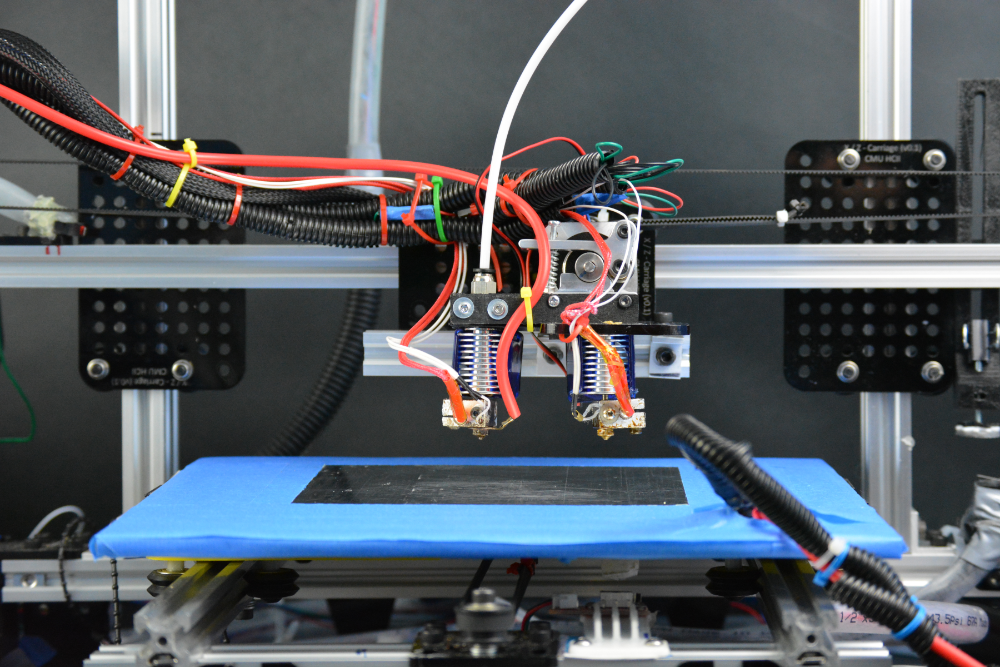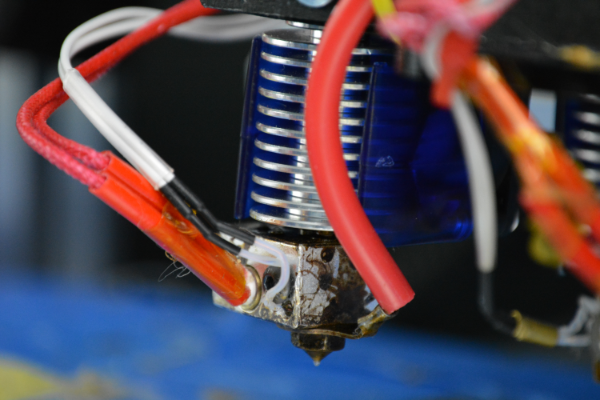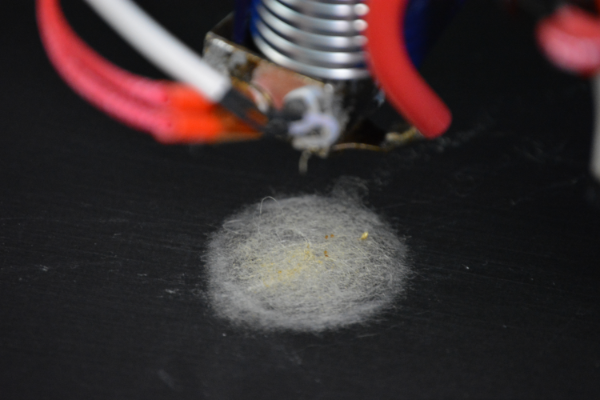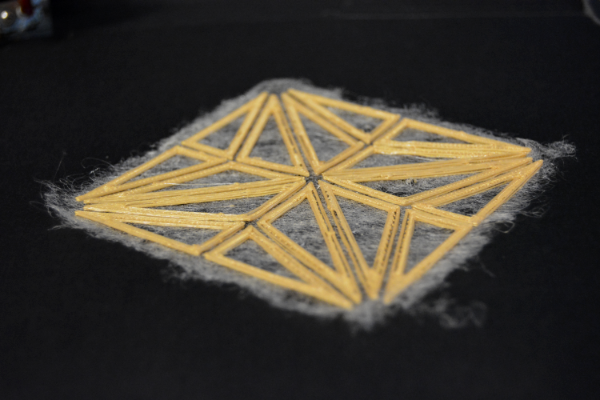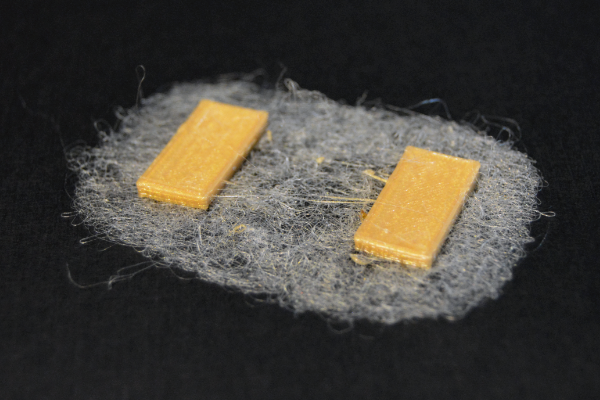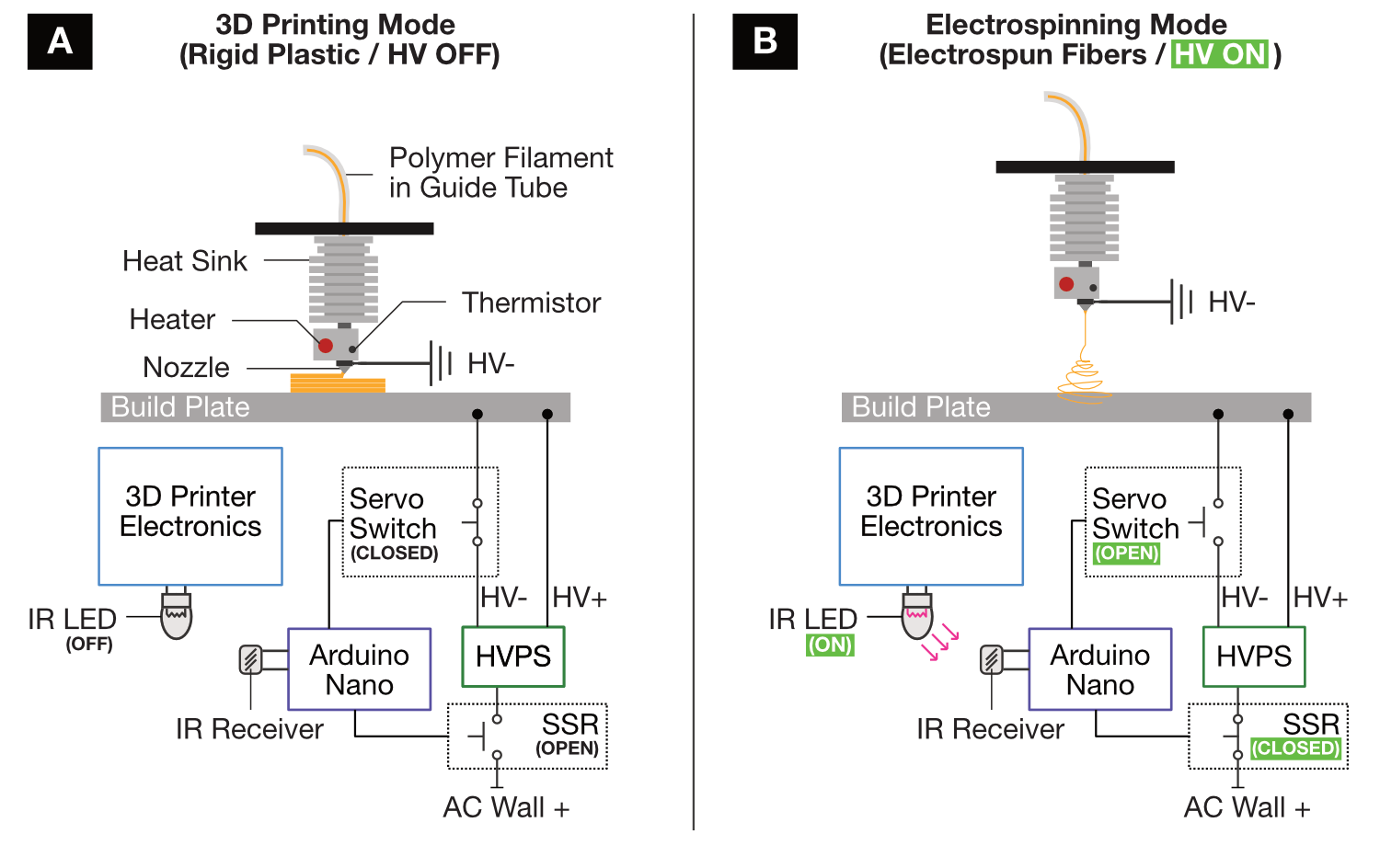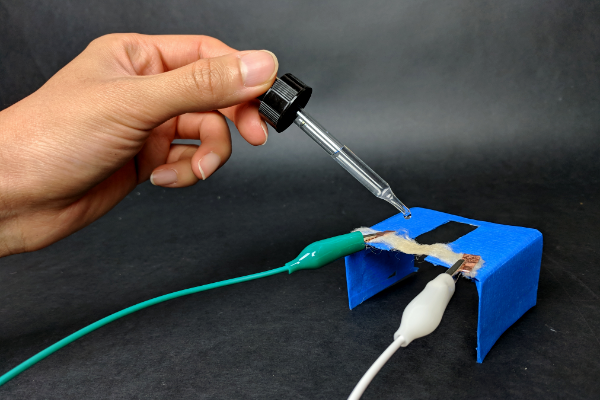Abstract
We present a new type of 3D printer that combines rigid plastic printing with melt electrospinning– a technique that uses electrostatic forces to create thin fibers from a molten polymer. Our printer enables custom-shaped textile sheets (similar in feel to wool felt) to be produced alongside rigid plastic using a single material (PLA) in a single process. We contribute open-source firmware, hardware specifications, and printing parameters to achieve melt electrospinning. Our approach offers new opportunities for fabricating interactive objects and sensors that blend the flexibility, absorbency and softness of produced electrospun textiles with the structure and rigidity of hard plastic for actuation, sensing, and tactile experiences.
Reference
Michael L. Rivera and Scott E. Hudson. 2019. Desktop Electrospinning: A Single Extruder 3D Printer for Producing Rigid Plastic and Electrospun Textiles. In Proceedings of the 2019 CHI Conference on Human Factors in Computing Systems (CHI ’19), 1–12. https://doi.org/10.1145/3290605.3300434
abstract
We present a new type of 3D printer that combines rigid plastic printing with melt electrospinning– a technique that uses electrostatic forces to create thin fibers from a molten polymer. Our printer enables custom-shaped textile sheets (similar in feel to wool felt) to be produced alongside rigid plastic using a single material (PLA) in a single process. We contribute open-source firmware, hardware specifications, and printing parameters to achieve melt electrospinning. Our approach offers new opportunities for fabricating interactive objects and sensors that blend the flexibility, absorbency and softness of produced electrospun textiles with the structure and rigidity of hard plastic for actuation, sensing, and tactile experiences.
Reference
Michael L. Rivera and Scott E. Hudson. 2019. Desktop Electrospinning: A Single Extruder 3D Printer for Producing Rigid Plastic and Electrospun Textiles. In Proceedings of the 2019 CHI Conference on Human Factors in Computing Systems (CHI ’19), 1–12. https://doi.org/10.1145/3290605.3300434
frequently asked questions
We used a design variation that is similar in construction to the Prusa I3. We tweaked the design to have a larger, extensible build volume before adding the modifications that support melt electrospinning.
In this work, we only discussed using PLA but have recently been using the technique with PCL. Beyond PLA and PCL, there's a lot of great research in the polymer science and bioengineering communities that show melt electrospinning can be done with a wide range of thermoplastics (like Nylon, Polypropylene, TPU). We are currently exploring how to incorporate these materials into our printing process and enable a wider range of applications.
We see this current printer as a step towards blending textile fabrication directly into a traditional FDM 3D printing process. The combination could allow users to create interesting digital designs that support both types of material and fabricate the designs in a single process.
These designs could leverage the electrospun textiles for sensing purposes that we describe in the work such as detecting the presence of liquids and moisture, or changes in pressure. With the fabrication process scaled up, we envision creating custom clothing that actuates open when the someone is sweating too much, or a soft shoe insole or seat cushion that can detect how active (or inactive) a person is.
Electrospinning (in general) has been widely used in biomedical engineering and material science communities to create tissue scaffolding, bandages for wounds, and even to clean up oil spills. Various applications can be found here.
There are plenty of consumer-grade 3D printers out there. There are also some expensive melt electrospinning set-ups that are much more controlled for the biomedical applications they target. The goal of our work is to introduce a combined technique to other areas (like Human-Computer Interaction) with the hope of broadening application domains.
With that goal in mind, our printer is the first 3D printer that combines both rigid plastic 3D printing and melt electrospinning together in a single process.
